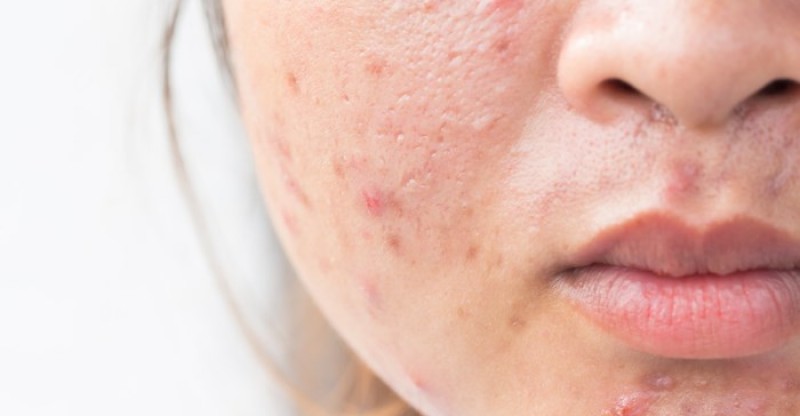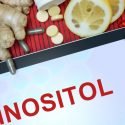How to Get Rid of Blackheads Naturally (15 Remedies)
In recent years, skincare has evolved from being an all-natural process to one that involves an extensive list of chemicals and acid compounds.
Mainly, it now rids the skin of pimples and smooths out the appearance of any past blemishes.
Though these synthetic facial cleansers were (and still are) quite effective at getting the job done, they often don’t prevent or treat blackheads.
In fact, despite the best efforts of some of the largest skincare brands in the world, blackheads are still best treated by using natural remedies that can be made from items that are already in most homes.
In addition to convenience, natural remedies used to treat blackheads have a few added benefits — which most users will particularly enjoy.
First and foremost, natural blackhead remedies allow for chemical-free treatment of the skin.
This treatment prevents unnecessary chemicals from drying, flaking, or irritating the skin.
People with sensitive skin are especially susceptible to the irritation caused by some of the chemicals and compounds found in face washes, anti-blemish creams, and over-the-counter blackhead-removal treatments.
Additionally, home remedies are often more affordable and easier to use than their store-bought alternatives.
This advantage makes it easier to engage in forming a long-term habit of healthy skincare.
The 15 home remedies mentioned below treat existing blackheads, as well as the causes of future blackheads.
And they treat them in a way that’s natural, in tune with healthy skincare practices, and affordable for the broadest array of users.
Oatmeal
Oatmeal might be most strongly associated with a healthy, balanced start to the day.
But this popular food also has quite a few benefits for the skin.
Aside from being a breakfast staple, oatmeal is best known for its anti-irritation properties.
In fact, the anti-irritation properties of oatmeal are so highly regarded that most physicians still recommend it as a way to stop the itching and irritation caused by chickenpox and similar skin diseases.
In terms of its use as a natural blackhead treatment, the anti-irritation properties of oatmeal are a key part of what makes it such an effective home remedy.
In addition, oatmeal is full of essential nutrients and antioxidants.
And it has skin-cleansing properties that allow it to gently scrub the surface of the skin and remove impurities (including blackheads) with just a little bit of effort.
The best way to use oatmeal to treat blackheads is as follows:
- Use a small amount of all-natural, rolled oats. Cook them with a mixture of distilled water that’s been cleaned of any impurities.
- After the oatmeal has cooled to room temperature, rub it onto all areas of the skin that feature blackheads.
- Allow the oatmeal to sit on the skin for 10 to 20 minutes. Rinse the mixture off with warm, distilled water, and dry the face. The presence of blackheads should be significantly reduced.
Lemon Juice
Lemon juice is a natural astringent, which can work in tandem with facial cleansers to remove blackheads from the skin.
However, one important item to note is that lemon juice can negatively affect people with sensitive skin.
More specifically, lemon juice causes sensitive skin to be even more sensitive to sunlight, which leads to a dramatically increased risk of sunburn (or skin irritation in periods of high heat).
In order to reduce the risk of these occurrences, individuals who suffer from sensitive skin should avoid using lemon juice treatments during the peak summer months.
Otherwise, lemon juice treatments are extremely easy:
- Use actual lemons, rather than a store-bought lemon juice mixture that’s been bottled. These mixtures often include other, non-natural ingredients, which could reduce the benefits of pure lemon juice.
- After juicing a few lemons into a jar or bottle, use a cotton ball to dab the lemon juice. Then gently apply it to the affected area. Make sure not to scrub too hard or too long, as it’ll increase the chance of skin irritation.
- Allow the lemon juice to fully dry, but don’t rinse it off.
- This treatment is best used before bed. Then in the morning, rinse it off to remove remaining lemon juice and any blackheads that have been successfully treated.
Baking Soda
Baking soda is one of the most utilized home remedies.
It has properties that help clean grout, remove stains from cookware, and even clean ovens without a single abrasive chemical.
Its many redeeming qualities also make it a great fit for all-natural skin care, specifically the removal of blackheads.
In this case, baking soda is turned into a thick paste and applied to the areas of the skin where blackheads are most noticeable.
Before starting treatment with baking soda, keep in mind that this treatment has a high level of pH.
As a result, it could seriously dry out the skin if left in place for too long.
The best way to use this treatment is to do so quickly, and thoroughly rinse the baking soda mixture off the face.
- Start with any brand of baking soda, and mix it with warm water until a thick paste forms.
- Apply the baking soda mixture to areas of the skin where blackheads are most noticeable. Before rinsing it off, allow the treatment to set for just a few seconds.
- Using warm, distilled water, thoroughly rinse the mixture. Pat the face dry.
Honey
Known more as a natural sweetener, honey is also antiseptic and antibacterial.
These two properties are highly sought after in high-end cosmetics that treat blemishes.
But honey delivers them in a far more natural, affordable way.
Better yet, honey is perhaps the easiest method for treating blackheads and pimples.
From start to finish, the entire process takes about 30 seconds:
- Heat up a small amount of honey (about a tablespoon) until it’s just a bit warmer than room temperature. It’s easiest to use quick, 15-second bursts in a microwave, until the honey reaches its desired temperature.
- Dab the warm honey directly onto blackheads. Make sure not to smear, rub, or scrub the honey while applying it to the affected areas.
- After a few seconds, use a warm, damp cloth to remove the honey. The blackheads should also be removed from the skin, which will be visible on a white cloth afterward.
Green Tea
The anti-inflammatory properties of green tea have long made it the health drink of choice for fitness enthusiasts.
But many people might not know that the substance is also an excellent, all-natural way to treat recurring blackheads — due to both the anti-inflammatory properties of green tea and its excellent list of essential nutrients.
When the tea is directly applied to the affected areas of the skin, the pores are allowed to open.
Then the blackheads are easier to remove.
- Steep a strong green tea. Use a small amount of water and two teabags. Allow the steeping to continue until the mixture is a dark yellow or brown color.
- Once the tea is done steeping, allow it to cool to roughly room temperature before applying it to the skin.
- Dab the green tea with a cotton ball. Directly apply it to blackheads, allowing the tea to dry for about 10 or 15 minutes prior to removal.
- Rinse the area with warm water. Then apply a moisturizer.
Cinnamon
Cinnamon’s many healthy properties have long made it a central part of all-natural treatments.
They range from bolstering immune health to focusing on skin clarity.
For blackheads, cinnamon is best used by turning it into an all-natural scrub.
In just a few minutes, this scrub can effectively open pores and permit the removal of blackheads from the surface of the skin.
In the process, this treatment can eliminate flaky skin, reduce the frequency of acne, and give the skin a healthier, more noticeable glow.
- Create a paste that’s one part organic cinnamon and two parts organic, all-natural honey. The resulting paste should be very thick and a dark brown color.
- Apply a very thin layer of the cinnamon paste to areas of the skin that are most affected by blackheads. Make sure not to over-rub the skin.
- Allow the cinnamon paste to set for up to 15 minutes. During this time, the paste will be hard at work — opening pores, creating that healthy glow, and removing other imperfections from the skin.
- Rinse the paste off with an all-natural facial cleanser. Then apply a gentle moisturizer.
Turmeric
Alongside cinnamon, turmeric is a spice that has a long history of being used to naturally treat all kinds of ailments.
However, it’s important to note that standard turmeric can actually stain the skin if used to remove blackheads.
Therefore, only Kasturi turmeric should be used to treat the skin.
This slightly different variation of turmeric has different nutritional properties, and it won’t result in staining.
Instead, it’ll open the pores, promote a healthy glow, and allow for easier removal of blackheads.
- Mix a small amount of turmeric with a small amount of water or coconut oil. Water is more readily available, but coconut oil will increase the healthy properties of the paste.
- Apply a light layer of the resulting turmeric paste to blackheads and blemishes, letting it sit for 15 to 20 minutes.
- Rinse the paste away with lukewarm water. When using turmeric, the use of a cleanser or moisturizer is not necessary.
Nutmeg and Buttermilk Scrubs
Nutmeg and buttermilk are more associated with the holidays and breakfast (respectively).
But they actually combine to create a highly effective skin treatment.
First and foremost, nutmeg is a naturally abrasive spice, which acts as a natural scrub for the skin.
And buttermilk is also high in lactic acid, so it can act an astringent.
When combined with the scrubbing action of nutmeg, it works its way deep into the pores.
Using this scrub is pretty simple:
- Mix a small amount of nutmeg with just a bit of buttermilk — until the two ingredients form a thick, light-brown paste.
- In a circular motion, apply a thin layer of nutmeg paste to the skin. Make sure to gently scrub the skin without overdoing it and causing irritation. This process should last between 3 and 5 minutes.
- Gently rinse off the paste (and most blackheads) by using warm water. Distilled water works best for this application.
Epsom Salts
Epsom salts don’t just relieve the pain of sore or overworked muscles.
When combined with a bit of hot water and iodine, they can also open up the pores and allow for the quick removal of blackheads.
Here’s how to get the job done:
- Dissolve a teaspoon of Epsom salts in a bit of hot water. Then add a few drops of iodine to the mixture.
- Before applying, allow the mixture to cool until it’s lukewarm. Then gently massage the affected areas with it. Allow the skin to completely dry before proceeding.
- Rinse and wash the face with warm water. Then pat it dry with a towel.
Egg Whites
Egg whites are often considered bad for the hair, but that doesn’t mean they can’t fix quite a few skin issues.
The best way to leverage the healing and cleansing power of egg whites for treating blackheads is to use them as a facemask.
This process is quite easy, though it’ll require patience and a few layers of tissues:
- Crack open two eggs, removing the yolks from the whites. Apply a layer of egg whites directly to the entire face.
- Place a tissue over the face, and press gently. Then apply another layer of egg whites and a second layer of tissues.
- Allow the mask to completely dry. Then peel it away from the face.
- Rinse the face with warm water and a natural cleanser.
Toothbrushes
For severe cases, a toothbrush can be used to remove highly visible blackheads.
- Using a clean, soft-bristled toothbrush, apply a bit of lemon juice.
- Gently scrub the affected area.
- Allow the area to dry.
- Rinse it with a facial cleanser, and apply a moisturizer.
- Soak the toothbrush in hydrogen peroxide.
Bentonite Clay
Since its discovery a few centuries ago, bentonite clay has been a key source of all-natural treatments.
The clay contains more than 60 essential nutrients and minerals.
So it’s especially powerful for getting rid of blackheads and other skin issues.
For blackheads, the process is pretty easy:
- Mix a small amount of the clay with a natural astringent (such as apple cider vinegar). Then wash your hands before applying the mixture.
- Apply a thin layer of the mixture as a paste. Allow it to fully dry for about 25 minutes.
- Rinse the face with lukewarm water. Then apply a moisturizer to rejuvenate the skin.
Sugar and Olive Oil Scrubs
In recent years, sugar has been blamed as being the primary source of an obesity epidemic, which is making headlines in most developed countries throughout the world.
But despite its bad reputation in the world of healthy eating, sugar actually has a few redeeming qualities in skincare.
Refined sugar is quite abrasive, and it makes an excellent scrub.
When combined with olive oil (which features a wide array of healthy fats and essential nutrients), sugar’s power to clear the skin of blackheads is quite impressive.
There are numerous ways to make a sugar scrub that’ll remove blackheads.
The most effective technique is listed below.
When used overnight, this powerful scrub removes a significant percentage of the most noticeable blackheads from the face (and other appropriate areas):
- Combine sugar with unheated olive oil.
- Once a suitable scrub has been mixed together, gently apply it to the face in a circular motion. Cover all areas where blackheads are present.
- After a gentle scrub, allow the mixture to sit on the face for at least a full minute. Make sure not to touch the face or mixture.
- Rinse the mixture off, dry the face, and go to bed — allowing the pores to remain open overnight. In the morning, blackheads should be noticeably reduced.
Apple Cider Vinegar
When it comes to cooking, apple cider vinegar is decidedly less popular than standard white vinegar.
Even so, for at-home remedies, it’s an essential ingredient.
Blackheads are most effectively treated by using a regular astringent that can clear the face of impurities, and remove oils from the skin on a regular basis.
Most face wash brands offer this kind of astringent to their customers.
Some companies also sell high-priced toner that accomplishes the same goal.
Apple cider is no less effective, but it’s far more affordable as a DIY blackhead remover.
In terms of how to remove blackheads, apple cider vinegar offers two options.
Both are listed below, and each deserves to be considered — over pricier, less natural toner products already on the market.
- Simply apply the vinegar to the face directly from the bottle (just like a toner). To make this simple rinse:
- Apply a small, room-temperature amount of apple cider vinegar to the skin. Rub in a circular motion.
- Immediately rinse the vinegar from the face, and dry with a towel. For best results, use distilled water that contains no impurities.
- Use a simple recipe that effectively cools, heals, and cleanses the skin. To make this cooling toner:
- Combine a small amount of apple cider vinegar with a few crushed mint leaves.
- Apply the resulting mixture to the face. Gently rub in a circular motion for about 30 seconds.
- Immediately rinse the mixture from the face with distilled water. Pat the face dry with a towel.
Honey and Milk Strips
One of the most effective ways to remove blackheads from the skin is to actually rip them out.
Use a strip that pulls blackheads away from the skin, and retains them in an adhesive mixture.
Then they can’t clog pores a second time.
Numerous companies sell these strips at a high premium, but there’s a homemade blackhead remover that can do the same job for much less.
All it takes is a bit of honey and milk, as well as a small piece of bandage material that’ll hold, apply, and remove the mixture.
- Start out with a piece of thin, pure cotton, which can be disposed of after the pore strip has been used.
- Create an adhesive mixture that’ll help remove blackheads from the skin. Use just a teaspoon of milk and a tablespoon of raw, all-natural honey. Mix these two ingredients together, and apply them to the thin piece of cotton that’ll be used as the strip in this application.
- Apply the honey and milk strip to the skin. To ensure that the mixture gets into the pores and latches onto blackheads in the affected area, gently press down on the cotton material.
- Remove the strip in a simple, quick motion. Since they’ve been caught in the mixture, the removed blackheads should be noticeable on the underside of the strip.
Conclusion
Blackheads can be an unsightly distraction from otherwise clean, clear, healthy skin.
They’re caused by a combination of dirt and oil falling into pores, which are left behind by more common facial treatments.
If not properly taken care of, blackheads can also lead to pimples.
Many home remedies and over-the-counter products promise to make blackheads a thing of the past.
But the 15 home remedies mentioned here are easily the best, most effective for a broad cross-section of people.
From natural scrubs to facemasks, these approaches will help keep skin clearer, cleaner, and more resilient over the long term.
FDA Compliance
The information on this website has not been evaluated by the Food & Drug Administration or any other medical body. We do not aim to diagnose, treat, cure or prevent any illness or disease. Information is shared for educational purposes only. You must consult your doctor before acting on any content on this website, especially if you are pregnant, nursing, taking medication, or have a medical condition.
HOW WOULD YOU RATE THIS ARTICLE?






This is interesting blog, that is the thing I’m looking for over the net. Finally I found it. I have blackheads and I hate them. These efforts can be very helpful for me. Thanks for sharing this.
Love this article! Home remedies are actually helpful for treating blackheads and we can access them easily. These are the best remedies to treat blackheads at home. Thanks for sharing.